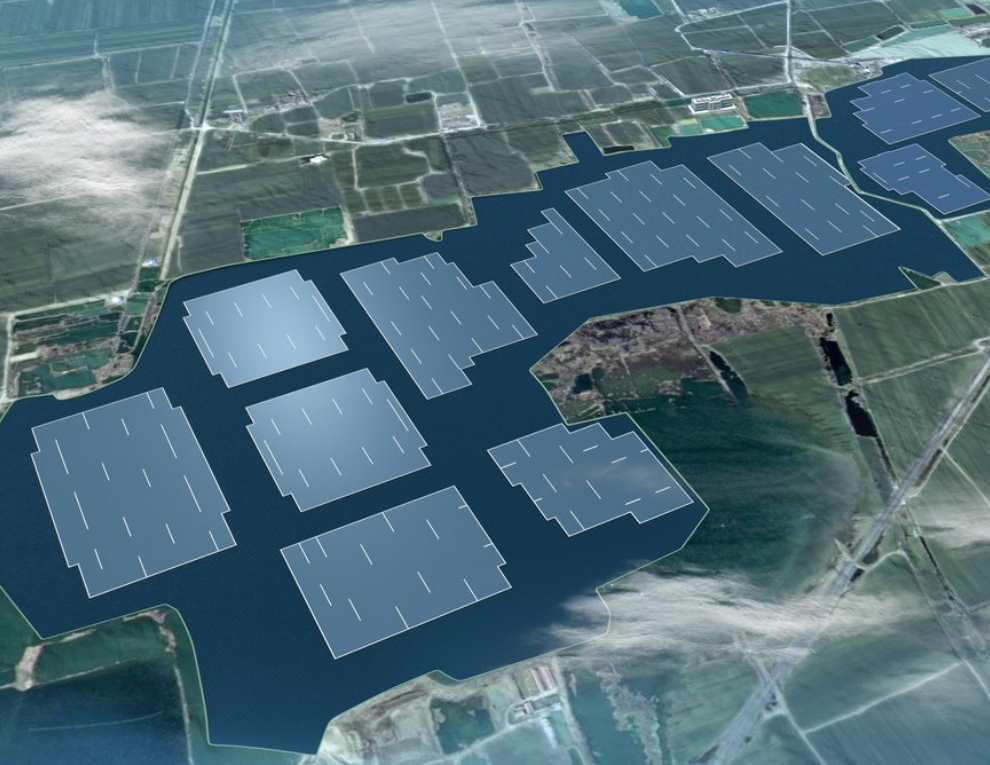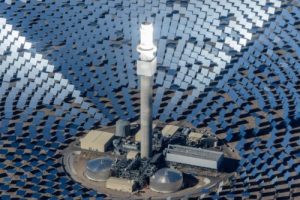
In a year in which President Trump seemingly did his best to roll back all the emission-reducing inroads of the Obama administration, the worldwide demand for low-cost, low-carbon energy continued to climb at unprecedented rates.
China, the world’s biggest emitter of greenhouse gases and still a major player in coal, is now on target to lead international investment in the sector, according to a recent report by the Institute for Energy Economics and Financial Analysis (IEEFA).
Closer to home, a surge in solar PV installations – Australia set a new record in 2017 for the fastest time to reach a commissioned 1GW of solar in a calendar year – and widespread investment in wind farms has restored sector confidence.
Australia’s Clean Energy Council reveals that 43 renewable energy projects were under construction or due for completion by the end of 2017. The CEC believes these projects will deliver $8.8 billion in investment, more than 4,469 MW of new renewable energy capacity, and create more than 4,930 direct jobs.
In a watershed year for renewable energy around the globe, below are five other highlights to get excited about.
1. Australia now has the largest lithium-ion battery
When Elon Musk makes a promise, he delivers. In response to ongoing power shortages in South Australia, Musk tweeted Atlassian CEO Mike Cannon-Brookes in March saying he could create a 100MWh battery storage farm within 100 days as a solution. If not, he’d foot the bill for his troubles.
The batteries were sent and installed well before the Australian heat waves hit – and well ahead of Musk’s self-imposed deadline.
Tesla’s Powerpacks are connected to a wind farm in Hornsdale, owned by French renewable energy company Neoen.
Thanks to Musk’s pledge, South Australia’s premier Jay Weatherill says it’s the first time the state has been able to reliably dispatch wind energy to the grid 24 hours a day, seven days a week.
2. China opens the world’s biggest floating solar farm
A Chinese city once famous for coal became the home to the world’s largest floating solar farm in 2017.
In a symbolic nod to where its energy commitments now lie, Chinese authorities also built it atop a former Huainan coal mine, which had become a lake after being flooded with groundwater.
The 40-megawatt power plant consists of 120,000 solar panels covering an area of more than 160 American football fields. The US$45-million facility could help power 15,000 homes.
Its tenure as a record-breaker, however, is to be short-lived. China, now the global leader in renewable energy investment, started building a 150-megawatt project in the same province in July. The entire facility is expected to be come online by May 2018.
3. SA green-lights the largest single-tower solar thermal power plant
The state once beset by energy woes, is fast becoming the renewable energy leader in Australia. Hot on the heels of the Tesla-built battery farm launching in South Australia, came news of the final stage of government approval for the building of the world’s largest solar thermal plant.

It works by using multiple heliostats – which are in essence turning mirrors – to focus solar energy onto a single central tower.
This tower uses molten salt technology to store the heat, which it can later use to create steam to turn a turbine and generate electricity. The Government contract with United States operator Solar Reserve plant will displace the equivalent of 200,000 tonnes of CO2 annually.
The news is accompanied by new figures showing South Australia has successfully shut off its energy reliance on Victoria. Every week since July, South Australia has sold more power to Victoria than it’s brought in.
4. Offshore wind farms
Unencumbered by the usual noise and space limitations of their land-based equivalents, giant turbines rose up from the sea in record numbers in 2017. In May, Dutch officials opened what was billed as one of the world’s largest wind farms – a 150-turbine behemoth in the North Sea. Over the next 15 years, the windpark, which lies some 85 kilometres off the northern coast of The Netherlands, is tipped to meet the energy needs of about 1.5 million people.
With the benefits of more consistent and higher wind speeds at sea it has a peak generating capacity of 600 megawatts and will help supply 785,000 Dutch households with renewable energy.
TenneT, the Dutch equivalent of the UK’s National Grid, also proposes to construct a man-made island on Dogger Bank in the middle of the North Sea to act as a distribution hub for wind farm electricity (see video above).
Now Australia is looking to join the cause with an even bigger project. Melbourne-based Offshore Energy announced in December that it is partnering with Copenhagen Infrastructure Projects to build the country’s first offshore windfarm off the coast of Victoria.
When completed the $8 billion, 2GW, 250 turbine wind farm – dubbed Star of the South – would have the capacity to power 1.2 million homes, or 18 per cent of the state’s current electricity usage.
5. Harnessing Blockchain technology for cheaper power
A WA start-up capitalised on the surge in solar panel and battery installation in Australia with a new peer-to-peer way to buy and sell renewable energy. Power Ledger is a blockchain-based trading platform – bitcoin uses the same technology – that allows trading of renewable electricity without the need for a midd

leman.
In October, the energy tech start-up made Australian history with the nation’s first initial coin offering through the Ethereum cryptocurrency network after raising $18.9 million in capital in the lead up to its launch, reports The Sydney Morning Herald. Since the ICO, the value of Power Ledger’s 351 million POWRs – cryptocurrency tokens – in circulation increased to $US225 million, according to coinmarketcap.com.
The Perth-based company also recently shared a $2.25 million federal grant with CSIRO, Landcorp and Curtin and Murdoch universities to demonstrate a sustainable energy and water housing project in Fremantle and is using its cash to employ more software developers and build its staff to about 25. Other trial partners include India’s Tech Mahindra, Origin Energy and New Zealand utility Vector.


